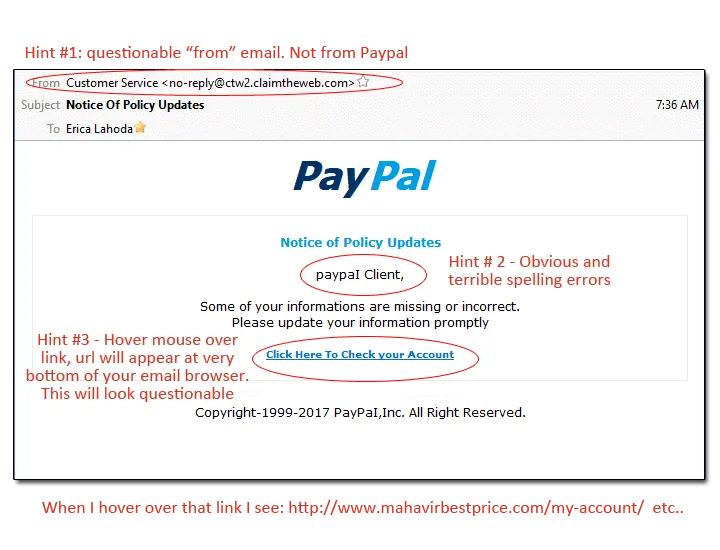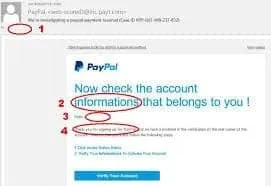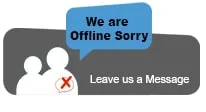Blog
A Guide for Spotting a SCAM or FAKE Email
This is a large number and something you should be aware of when receiving emails. Of course, you’ll want to read and respond to legit ones, but make sure you follow our tips for spotting fake or scam emails.
We will help you with some steps on spotting a scam or fake email below.
More tips from computer repairs Essex
Tips For Spotting A Scam or Fake Email
Watch-out For the Name on the E-mail
Display name is very important on every email received, because it gives insight of where the mail probably came from. But don’t be deceived, 60% of counterfeit emails, spoof the name of largest brands, products or services. like eBay PayPal, your bank or building society so check carefully.
Look out for names that are very similar to the company you expect the email to be from. Sometimes they’ll use characters that seem legit to trick you into read it incorrectly – and therefore believing the email to be genuine. Always double check spelling so you can be 100% sure you know where the email has come from.
Take Your Time to access the attached link properly
Pellentesque auctor neque nec urna. Suspendisse pulvinar, augue ac venenatis condimentum, sem libero volutpat nibh, nec pellentesque velit pede quis nunc. Proin faucibus arcu quis ante. Vivamus euismod mauris. Vestibulum turpis sem, aliquet eget, lobortis pellentesque, rutrum eu, nisl. Sed aliquam ultrices mauris.

Solutions to Scam Emails
1.
Don’t be too soft/hard; passionate/hot-blooded about every email you get; scammers can capitalize on your kindness.
2.
Employ the use of Digital Certificates. Digital Certificate is an identity that proves to a user; whom the email sender truly is. Digital certificates are issued by Certificate Authorities (CAs).
3.
Be conscious and cautious before and while you click on any link that seems suspicious. Most importantly, that which requests your login details into any of your internet accounts or any financial info.

4.
Don’t open suspicious email attachments
Don’t just click on any attachments you get; it might contain viruses and malware, which can damage files on your computer, steal your information or spy on you without your knowledge.
5.
Ensure your privacy is not infiltrated
Your details are private and invaluable; ensure you don’t just give them out on any suspicious request.
6.
Take Your Time to access the attached link properly
Most times fake emails are filled with grammatical errors and spellings. Renowned brands hire professionals, to ensure the emails are properly written. Read your emails carefully and take note of any strange contents.
7.
Stay calm at every email you receive
Threatening languages or words of emergency are the tools used to invoke fear in scam emails, so watch out for words like;
“your account has been suspended/deactivated; or your account had an unauthorized login attempt.”
These kinds of words are used to send fear to the reader.

8.
Remember to check the source of the mail
If an email claims to be very delicate and important but details about the sender or how to contact them cannot be seen in the email then this should raise a red flag, emails like that are often not genuine
If you’re unsure of any emails you have recieved and want some advice, please get in touch as we would love to help.[/vc_column_text][/vc_column][/vc_row]


